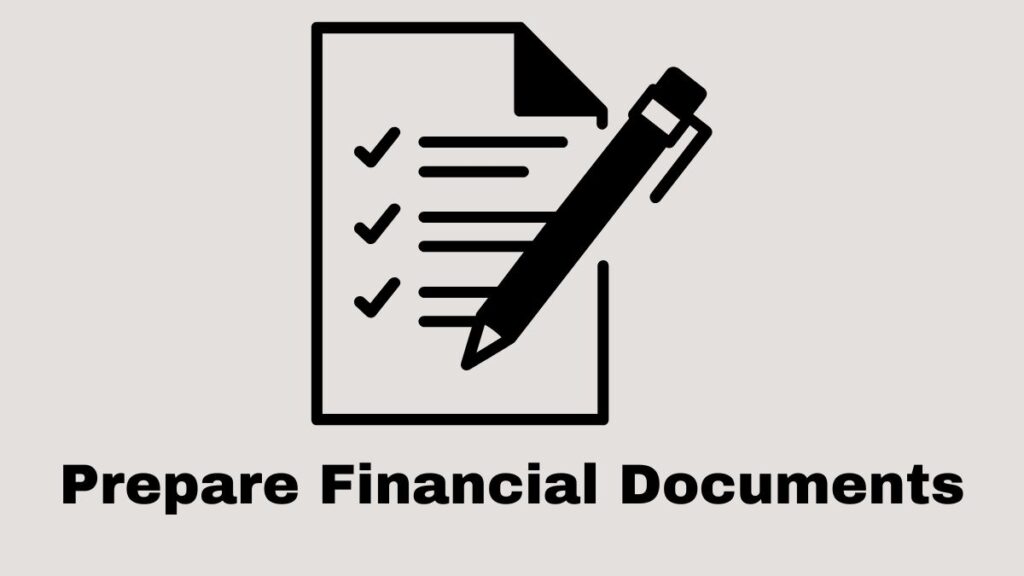Securing a small business loan can significantly impact the growth and survival of your business. Whether you’re launching a new product, expanding your operations, or managing short-term cash flow, understanding the loan application process can help you make the right decisions. This detailed guide will walk you through the essential steps, ensuring that you’re fully prepared to apply for a small business loan and improve your chances of success.
Follow These Steps to Applying for Small Business Loan
1. Assess Your Business Needs
Before applying for a business loan, it’s important to clearly define your financial needs. Start by determining the purpose of the loan and the exact amount you need. Business loans come in various amounts and types, so understanding how much capital you require will help streamline the process.
Key Considerations:
- Loan Amount: Calculate the exact amount you need. Overborrowing can lead to unnecessary interest payments, while underborrowing might leave you short.
- Purpose of Loan: Whether it’s for expansion, operational costs, purchasing equipment, or bridging cash flow gaps, ensure you know how the loan will help your business grow.
- Repayment Timeline: Consider the time it will take for your business to start generating enough revenue to repay the loan.
Common Loan Purposes for Small Businesses
| Loan Purpose | Common Uses |
|---|---|
| Working Capital | Covering daily operational expenses |
| Equipment Purchase | Buying new machinery, computers, or tools |
| Expansion | Opening a new location or expanding inventory |
| Debt Consolidation | Combining multiple loans or credit lines |
| Cash Flow Management | Managing seasonal business fluctuations |
Top 20 Things to Consider Before Applying for Business Funding
2. Check Your Creditworthiness
Lenders use your creditworthiness to assess the risk involved in lending to your business. Your credit score—both personal and business—will play a significant role in the approval process.
Steps to Check Your Creditworthiness:
- Review Your Personal Credit Score: This is particularly important if your business is new or has limited credit history.
- Review Your Business Credit Score: For established businesses, your business credit score will also be crucial in securing a loan.
- Look for Potential Issues: Ensure there are no inaccuracies or outstanding negative items on your credit report that might impact your application.
Credit Score Requirements for Business Loans:
| Lender Type | Personal Credit Score | Business Credit Score | Loan Type |
|---|---|---|---|
| Traditional Banks | 650+ | 700+ | Term Loans, SBA Loans |
| Online Lenders | 600+ | N/A | Lines of Credit, Short-term Loans |
| Credit Unions | 640+ | 650+ | Term Loans |
| Alternative Lenders | 550+ | 600+ | Merchant Cash Advances, Invoice Factoring |
How to Accurately Calculate Your Funding Needs: A Step-by-Step Guide with Real-Life Examples
3. Determine the Type of Loan You Need
Understanding the different types of loans available to small businesses is essential. Each loan type comes with its own eligibility requirements, terms, and benefits.
Common Loan Types:
- Term Loans: These are lump sum loans repaid over a fixed term, often used for major investments like equipment or expansion.
- Lines of Credit: Similar to credit cards, these provide ongoing access to capital as you need it, ideal for managing cash flow.
- SBA Loans: Backed by the U.S. Small Business Administration, these loans offer low-interest rates and longer repayment terms.
- Invoice Factoring: Involves selling your outstanding invoices to a lender in exchange for immediate cash, useful for businesses that deal with slow-paying customers.
- Merchant Cash Advances: Loans based on future credit card sales, often used by retail and restaurant businesses.
Loan Types Overview
| Loan Type | Ideal For | Typical Loan Amount | Repayment Terms | Interest Rates |
|---|---|---|---|---|
| Term Loans | Equipment purchase, expansion | $5,000 to $500,000 | 1 to 5 years | 6% to 20% |
| Lines of Credit | Ongoing working capital needs | $10,000 to $500,000 | Revolving, monthly/quarterly | 10% to 35% |
| SBA Loans | Long-term financing with low rates | $50,000 to $5 million | 5 to 25 years | 5% to 9% |
| Invoice Factoring | Businesses with outstanding invoices | Up to $1 million | Based on invoice terms | 1% to 5% per month |
| Merchant Cash Advance | Retailers, service businesses | $5,000 to $250,000 | Daily/weekly deductions | 30% to 150% APR |
4. Research Loan Providers
Once you know the type of loan you need, it’s time to research loan providers. The two main categories are:
- Traditional Banks: These lenders often offer the most competitive interest rates, but they have strict qualification criteria and lengthy approval processes.
- Online Lenders: These lenders offer quicker funding with more flexible qualifications but typically come with higher interest rates.
- Credit Unions and Alternative Lenders: These lenders can be a middle ground, offering competitive rates and slightly more flexible requirements.
Questions to Ask When Researching Providers:
- What is the interest rate and APR?
- What are the repayment terms?
- What fees are associated with the loan?
- How fast is the funding process?
- Are there any prepayment penalties?
Government Grants for Small Businesses: How to Apply step by step process
5. Gather Required Documentation
Lenders typically require various documents to verify your business’s financial health and ability to repay the loan. This may vary depending on the lender and the type of loan, but the following documentation is commonly required:
Key Documents:
- Personal Identification: Driver’s license, passport, or other government-issued IDs.
- Business Financial Statements: Profit and loss statement, balance sheet, and cash flow statement.
- Tax Returns: Business and personal tax returns for the last 2-3 years.
- Bank Statements: Recent bank statements for your business.
- Legal Documents: Articles of incorporation, business licenses, and operating agreements.
- Collateral Documents: If the loan requires collateral, have documentation for assets like property or equipment.
6. Prepare a Solid Business Plan
A well-prepared business plan can significantly increase your chances of loan approval. Lenders want to know that you have a clear strategy for using the loan and repaying it.
Components of a Business Plan:
- Executive Summary: A brief overview of your business, including your mission and vision.
- Business Description: A detailed explanation of your products or services, target market, and business model.
- Market Analysis: Insights into your industry, competitors, and customer base.
- Operations Plan: How your business operates on a day-to-day basis.
- Financial Projections: Detailed projections of your income, expenses, and cash flow for at least 3 years.
- Loan Repayment Plan: A section showing how the loan will be repaid and how it fits into your business’s overall financial plan.
How to Prepare a Detailed Proposal For Government Grants : A Step-by-Step Guide with Examples
7. Complete Your Loan Application
Once you’ve selected a lender and prepared all your documentation, it’s time to complete the loan application. Be thorough and ensure all required information is filled out accurately to avoid delays.
- Online Lenders: Most online applications are straightforward and take about 20-30 minutes to complete.
- Traditional Banks: Banks may require you to meet with a loan officer, so be prepared for a more time-consuming process.
Angel Investors vs Venture Capital: Finding the Right Fit for Your Business in 2024
8. Submit Your Application and Wait for Approval
After submitting your application, the lender will review your documents and assess your creditworthiness. Depending on the lender and loan type, this process can take anywhere from a few hours to several weeks.
- Online Lenders: Offer quicker approval, sometimes within 24-48 hours.
- Traditional Banks: The approval process may take 1-2 weeks.
9. Review the Loan Offer and Terms
Once approved, you will receive a loan offer that outlines the key terms, including the loan amount, interest rate, repayment schedule, and any additional fees.
- Loan Amount: Ensure that it aligns with your original request.
- Interest Rate & Fees: Compare rates with other lenders and check for any hidden fees.
- Repayment Schedule: Ensure that the terms are feasible based on your business’s cash flow.
10. Accept the Loan and Get Funded
Once you review the terms and are comfortable with the offer, you can accept the loan. The lender will disburse the funds
, and you can begin using the capital to grow your business.
11. Key Loan Terms You Should Understand
Understanding loan terms is crucial for effective loan management. Here are some key terms to know:
| Loan Term | Description |
|---|---|
| APR (Annual Percentage Rate) | The total cost of borrowing, including interest and fees, expressed as a yearly percentage. |
| Term Length | The length of time you have to repay the loan. |
| Collateral | Assets pledged to secure the loan. |
| Amortization | The process of gradually repaying a loan over time through regular payments. |
12. Common Mistakes to Avoid During the Application Process
- Not Checking Credit Scores: Failing to review both personal and business credit scores can lead to unexpected denials.
- Not Having a Clear Purpose for the Loan: Lenders will expect to see a clear plan for how you will use the funds.
- Ignoring Fees: Ensure that you factor in all fees when calculating the total cost of the loan.
- Not Shopping Around: Always compare multiple lenders to ensure you’re getting the best deal.
Final Thoughts
Securing a small business loan can be a transformative step for your business, but it requires careful planning and preparation. By assessing your needs, checking your creditworthiness, selecting the right loan type, and gathering the necessary documentation, you can greatly improve your chances of success. Take your time with each step, and don’t hesitate to seek professional advice if necessary.



